Introduction to Seals and Chops of a Hong Kong Company
In respect of a company registered in Hong Kong, the “chops” we use on a daily basis are the signature stamp and the small round chop. The company name or the word of “For and on behalf of” is engraved on the chop, and usually be used when the authorized person signs the commercial documents.
However, both the old Companies Ordinance (previously Cap. 32) of the Hong Kong legislation and the new Companies Ordinance (Cap. 622) only provide rules for the adoption and use of the “Common Seal”. Only a seal that is made, adopted and used in accordance with the Companies Ordinance (“CO”) and articles of association is the Common Seal of a company.
In other words, the CO does not provide provisions on the signature stamp nor the small round chop. These two seals are therefore not statutory seals of Hong Kong companies. Although still widely used in signing contracts or documents, whether or not they are stamped does not affect the validity of these documents.
The purpose of this article is to briefly introduce the special provisions of the Hong Kong CO, with which companies must comply, along with its the articles of association when using different seals and chops. There are three seals with legal effect, namely the "Common Seal", the "Official Seal" used outside Hong Kong and the "Securities Seal" used in securities documents. We will also introduce the signature stamp and the small round chop which are widely used in Hong Kong although they do not have any legal effect.
-
Common Seal
(1)
|
Shape of the Common Seal
A Common Seal, or also known as metal seal is a stamp made of metal. According to the provision of Hong Kong CO, common seal must be made of metal, and the company name must be clearly engraved on it. Normally a red or gold round sticker will be stick on the position that will be stamped and the common seal will be stamped on the round sticker. The shape of a Common Seal is shown in Illustrations 1 and 2 below.
Illustration 1: Shape of the Common Seal
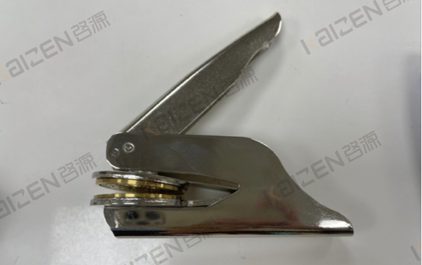
Illustration 2: Impression of the Common Seal (can be replaced with red or gold round sticker)
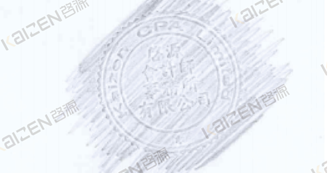
Other than the requirement of having the name of the company engraved in legible characters, the CO does not impose any special requirements in respect of the shape and content of the Common Seal. Theoretically, a company can decide on the shape and wording of its Common Seal and whether or not to add its company number or business registration number. As shown in the two illustrations above, this particular Hong Kong company only has its name engraved on its seal. However, some jurisdictions such as Australia or Singapore also require that the company number be engraved on it.
|
(2)
|
The Need of a Common Seal
Under the Old CO (previously Cap. 32) before 3 March 2014, every Hong Kong company was required to keep a Common Seal with the company name engraved in legible characters. The seal was generally required for executing deeds, issuing share certificates and other purposes. The New CO (Cap 622) has abolished this requirement, making the keeping and use of a Common Seal optional. Nevertheless, companies may still use a Common Seal to execute documents if they wish to do so.
Where a company decides to adopt and use a Common Seal, the company must provide in its articles of association clear rules as to the safe custody and use of the Common Seal. Of course, the board of directors is also required to pass a resolution to adopt such a metal seal as its Common Seal.
With regard to companies registered before 3 March 2014, if a company decides to cancel its Common Seal, it should amend its articles of association in accordance with the New CO and register the amended articles of association with the Companies Registry. However, as the Common Seal is now hardly used in practice, the common seal is still valid if company not to amend the articles of association.
|
(3)
|
The Use of a Common Seal
Regardless of the law, many companies choose to use a Common Seal. A Common Seal may give more legitimacy to documents, particularly from the perspective of people unfamiliar with the Hong Kong requirements for document execution. If a company has many overseas clients, it may choose to execute documents with a Common Seal to show legality and validity.
It is not necessary to use the Common Seal for everyday business, it may be appropriate to use a Common Seal for the following transactions:
(a) Significant contracts for major purchases;
(b) Real property transfers and land contracts; or
(c) Loan documents, mortgages and guarantees.
With the abolishment of the compulsory Common Seal, the New CO provides an alternative means for companies to execute such documents.
Section 127 of the Hong Kong CO allows businesses to execute a document with a Common Seal, but if one has not been adopted, documents may be executed by:
(a) Signing by the director (if the company has only one director); or
(b) Signing by the two or any two of the directors (if there are two or more than two directors); or
(c) Signing by one director and one company secretary (if more than one director).
All uses of the Common Seal should be recorded in a register. The register should contain not only a record of the use of the Common Seal, and the board minutes authorising the use of common seal also.
|
-
Official Seal
Section 125 and 126 of the CO provides that a company has use Common Seal could also have an Official Seal according to the articles of association. This Official Seal is a replica of the Common Seal.
Since the Official Seal is a replica of the Common Seal. Consequently, the Official Seal maintains the same shape and is made of the same material as that of the Common Seal. Also, a company can regulate the use of the Official Seal in its articles of association.
The Official Seal mainly serves two purposes. The first one is to be used outside Hong Kong and the second to be used for sealing securities (refer to point 3 of this article).
In the case where the Official Seal serves the first purpose – that is, as a seal of the company used outside Hong Kong, in accordance with the Section 125 of the CO, it must have both the name of the company and the place where it is to be used engraved on it. In other words, when a company needs to use its seal outside Hong Kong, and because it is inconvenient to send its seal to and from China or United States, it can make more than one Official Seal. Therefore, wordings such as “Used in the Mainland China Only” or “Used in the United States Only” are employed to indicate the place where such Official Seal is to be used.
As per Section 125(6) of the CO, a document where an Official Seal is affixed will be binding on the company in the same way it would be in the case of a Common Seal. Under Section 129 of the CO, a company may also appoint an attorney to execute the deeds that are outside Hong Kong.
-
Securities Seal
Besides the Official Seal discussed above, a Hong Kong registered company may make and adopt a “Securities Seal” for securities sealing. The Securities Seal is a also replica of the Common Seal but just for sealing share certificates or other securities only. The word “ Security” must be engraved on the Securities Seal.
However, this Securities Seal does not differentiate itself from the Common Seal in any major aspects and does not serve the purpose that the Official Seal used outside Hong Kong serves. Therefore, most of the companies in Hong Kong will not adopt such a seal and it is hardly used in practice.
For example, when we return the company kit to you, it includes share certificates, similar to the one shown in Illustration 3, which is issued to each shareholder/member of the company. The share certificate is the proof of ownership in the company.
Illustration 3: Share Certificate of Hong Kong Companies
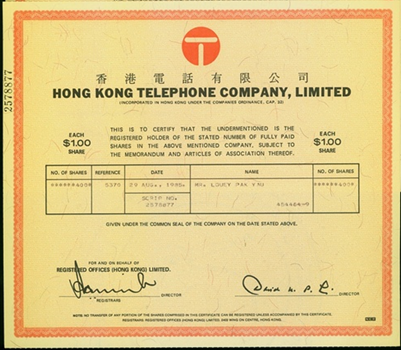
The wording on the share certificate “GIVEN UDNER THE COMMON SEAL OF THE COMPANY ON THE DATE STATED ABOVE” is used to indicate that, when a company issues share certificates to its members, it can seal the share certificates with the Common Seal rather than the Securities Seal. In practice, most of the private companies in Hong Kong, if not all, seal their share certificates with the Common Seal, so that the Securities Seal is hardly used.
Of course, certain companies listed on the Hong Kong Stock Exchange make use of the Securities Seal to seal their share certificates. This seal is also used by some listed companies to seal their debentures and trust deeds. Illustration 4 shows a share certificate issued by Bank of China (Hong Kong), on which the Securities Seal is used.
Illustration 4: Share Certificate with Securities Seal
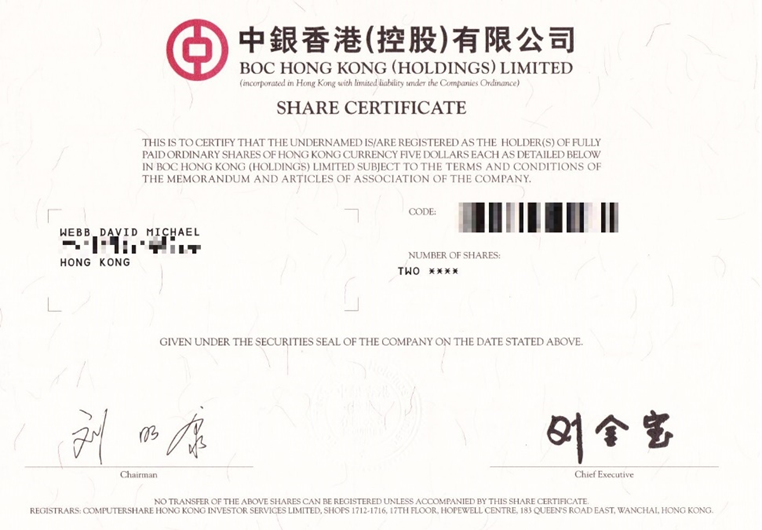
However, such certificate can also be sealed with the Common Seal. In this regard, the Securities Seal does not have important real-life applications.
-
Other Stamps
Compared to Common Seal, Official Seal and Securities Seal mentioned above, signature stamp and small round chop are more widely known. Before the new CO took effect on 3 March 2014, all companies would order, in addition to the Common Seal, one signature stamp and one small round chop at the time of incorporation although they were not statutory chops. Following the entering into force of the new CO, most of the newly incorporated companies would still order one signature stamp and one small round chop but would abandon the Common Seal as it is no longer required.
Illustration 5: Signature Stamp and Small Round Chop
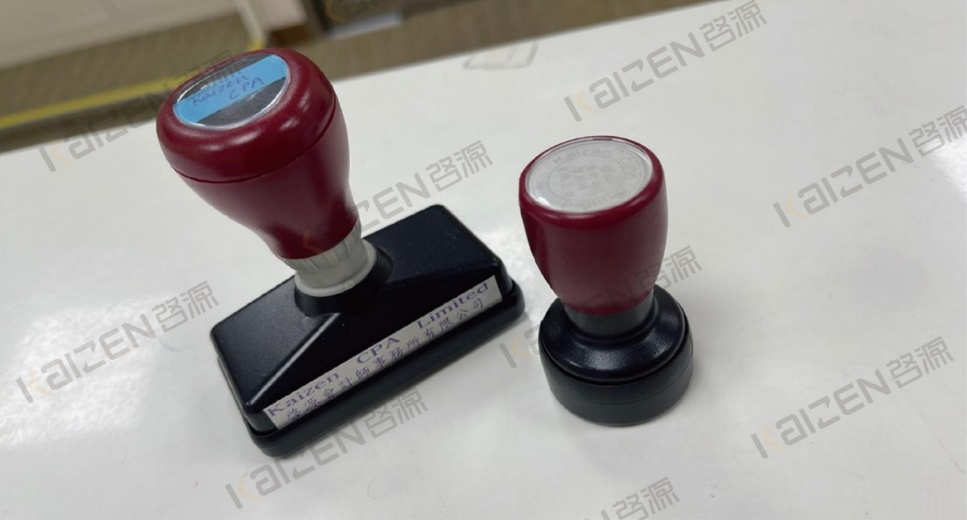
Illustration 6: Impression of the Signature Stamp and the Small Round Chop
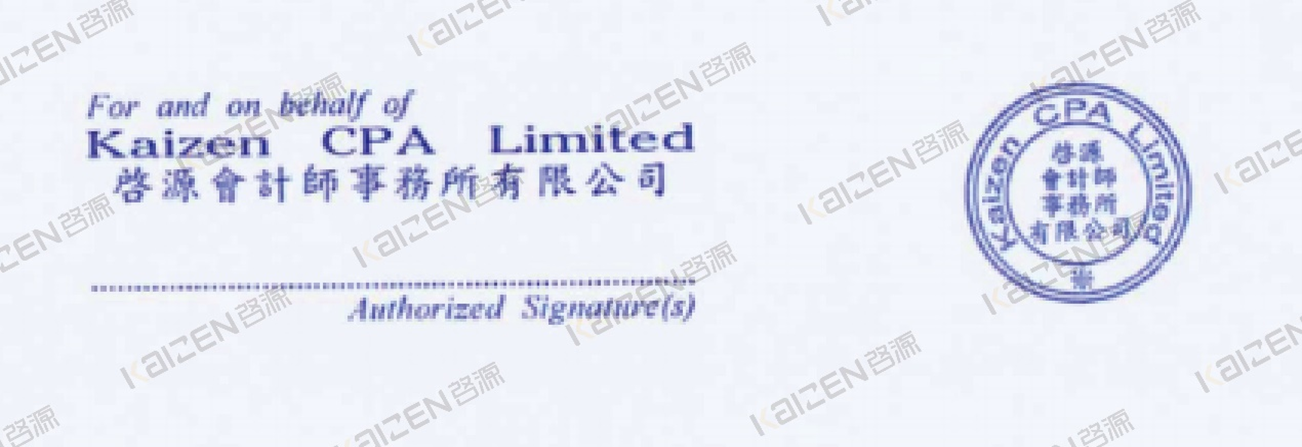
As shown in Illustration 5, the signature stamp is a rectangle-shaped and plastic made stamp. The impression of the stamp consists of three parts. The upper part of the stamp reads “For and on behalf of XXX Limited”, the lower part shows the wording “Authorised Signature(s)”, and the middle part is specifically reserved for the signing by the authorised person. Such arrangement of the impression is to indicate that the person who signs is authorised by the company and is signing on behalf of the company.
The signature stamp is widely used for signing business documents or contracts. In practice, many authorities in Hong Kong, especially governmental and regulatory authorities, expect a signature on behalf of a company to be accompanied by the imprint of a rubber stamp or chop showing the name of the company and a use of wording that indicates the authority of the signatory.
For example, when we represent clients to attend court hearings for late filing of tax returns or a late payment of business registration fees, we need to present an authorisation letter issued and signed by our clients. In those situations, the authorisation letter will need to be signed by one of the directors of our clients’ company with the signature stamp. Otherwise, the authorisation letter will not be accepted by the court as properly signed.
The small round chop is another chop that is used in many different occasions in the daily operations of a business. As can be seen in Illustration 6 above, it is made of plastic and is small and round-shaped, and it always prints in blue colour ink.
The small round chop is often used in daily and casual occasions, such as for stamping receipt of documents and couriers. For example, when the receptionist of a company receives a package by courier, he or she will stamp the acknowledgement of receipt with the small round chop.
Company number or business registration company may be engraved on the signature stamp or small round chop, but most of the Hong Kong company does not engrave these number on it.
In light of the increasingly common use of telecommunication and e-signatures, the importance of signature stamps and small round chop continues to decrease. In fact, many banks in Hong Kong have already abolished the requirement of having a signature stamp as part of a signature authorising the operations of bank accounts and issue of checks.
-
Get Your Seal and Chops
When you engage Kaizen to register your Hong Kong company, we will assume, by default, that you do not need the Common Seal. Only the signature stamp and the small round chop will be delivered to you as part of the company kit, unless otherwise specified by you. If you wish to have more than one signature stamp and/or small round chop, please indicate the required number of stamps and chops when incorporate the company. You can always order more stamps and chops from us whenever you need them.
If, at the time of incorporation, you initially decide not to have the Common Seal but change your mind at a later stage, or a need arises, simply inform us of your needs and we will order a Common Seal, prepare the relevant minutes of the board meeting or the written resolution to adopt one.
If you lose the Common Seal, you can always re-order a new one from us. We will provide you with a new one and prepare the necessary documents to adopt it, as required.
![]() Home
Home
![]() Knowledge
Knowledge
![]() Hong Kong
Hong Kong ![]() Investments in Hong Kong
Investments in Hong Kong ![]() Introduction to Seals and Chops of a Hong Kong Company
Introduction to Seals and Chops of a Hong Kong Company 





